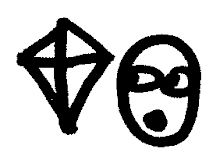Why do people always seem surprised that Rogers and Hammerstein's "golden age" musicals address these issues? Racism, colonialism, sexism were the subjects R&H were explicitly interested in, and they chose stories and dealt with them in ways specifically to comment on them.
The Times article says:
Anna and the king are not a couple, and their final scene is not a kiss in the moonlight. There is, however, a soaring musical number that feels like a happy ending: “Shall We Dance?,” choreographed this time by Christopher Gattelli. It has always been the show’s most thrilling moment. Anna and the king begin a polka by holding hands, but he knows better, having seen her dance with an Englishman. He puts his hand firmly around Anna’s waist, and hearts leap.Actually, no, it's more like mid-20th century. When it was written. The revival didn't make that up. It's in the piece. It's what that moment and that song are about.
One interpretation: Natural order is restored; the man takes charge. Mr. Sher argued that something else was going on: “The king allows himself to be taught and to be equal to a woman. To reach across cultures. Stepping across that boundary is just gorgeous.”
And very 21st century.
The King and I and South Pacific, Oklahoma, etc., don't just demonstrate regressive attitudes, they confront them. There are lines and passages that feel old-fashioned, condescending, uncomfortable to our sensibilities because we think about these issues differently now, but can we stop talking about these musicals as if they're from the dark ages, before we all become so sensitive and smart about racism and misogyny in our popular culture?
For their time, R&H were practically activists. Think about the huge mass audience they had during a period when not much pop culture questioned the status quo.


1 comment:
nice
Post a Comment